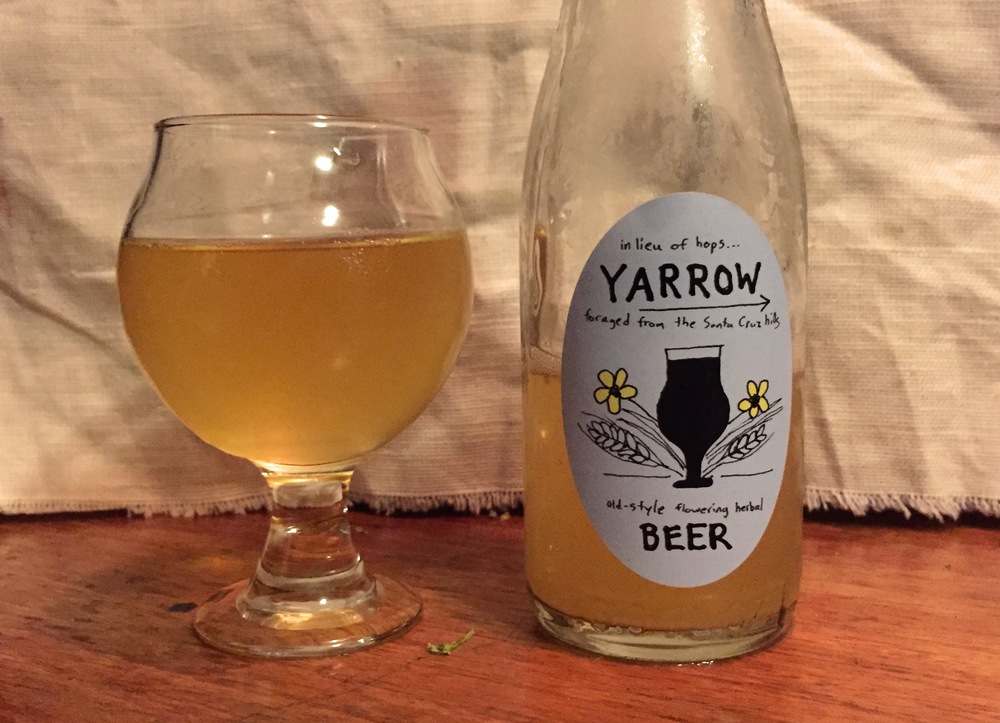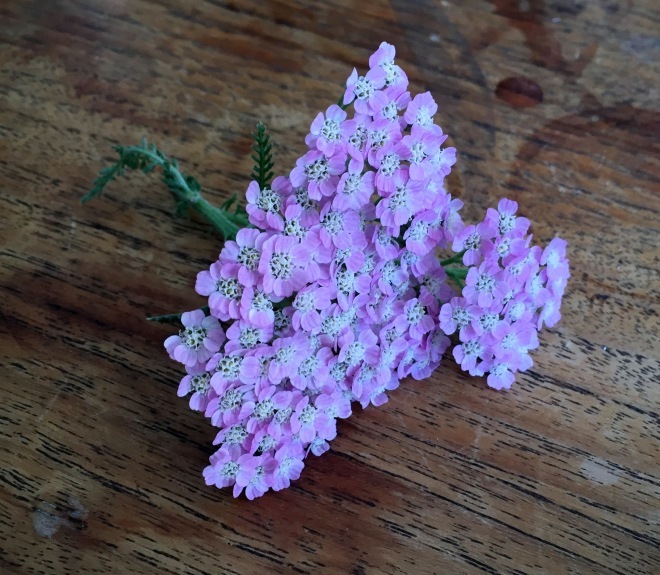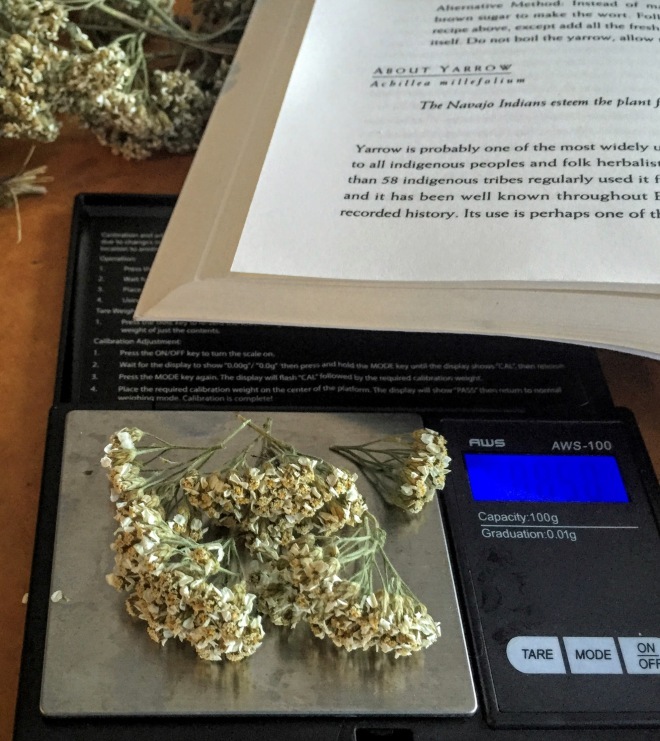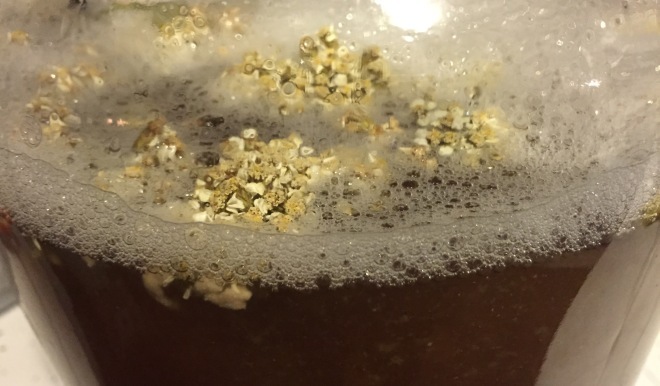The result:
Before hops became a key component of beer around the 14th century, beers were brewed with a range of herbs serving the roles of bittering agents and source of antibacterial / preservative compounds (a broad style, “gruit”, which has been enjoying a very minor revival).
Inspired by a chapter in The Brewer’s Tale, I picked up Stephen Buhner’s book Sacred and Herbal Healing Beers, which touches on brewing with herbs of various potencies and effects, which in turn inspired me to look for bitter herbs growing wild along local trails (such as mugwort and yarrow pointed out by H). Time to brew a few very small batches with individual local herbs in lieu of hops (whether or not the result was a pleasant beer– I’d be happy with “interesting”…)
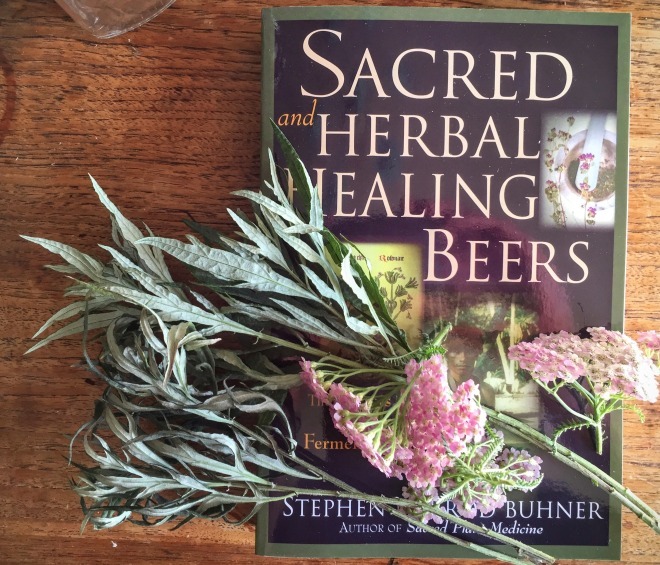
First up was a rustic all-grain light table beer (a mix of pilsner (barley) malt, wheat, and rye, with a target OG of 1.040 for a roughly 4% ABV beer) made with yarrow picked on a hike in the coastal hills North of Santa Cruz:
Drying and then weighing yarrow flowers for dose:
I tried using them like hops– with 0.3 oz / gallon 60 minutes for bitterness, plus a similar amount for “dry yarrowing” (e.g. thrown in the primary fermenter after cooling for more flavor/aroma than bitterness).
The wort going into fermentation wasn’t terrible– a bit tart/herbal from the yarrow, a nice smell – this might not be a total disaster.
About 6 weeks later, after fermenting, cold crashing, bottle-conditioning, and the obligatory label-making (see above), I poured a small glass of the dark straw-colored, very effervescent beer, with a very distinctive woody, spicy smell (like sage? really, something of its own) and a complex herbal, slightly bitter, tart taste– almost like a pile of dry leaves and lemon peel. Fascinating! More than that– I’d even say I like this beer and wouldn’t be disappointed to pay for it. That’s an unexpected success– too bad I only brewed about 9 bottles of it.
